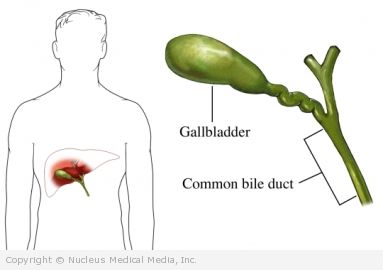(Yellowing of Skin)
Jaundice – Definition
Jaundice is a yellow discoloration of the skin, mucus membranes (tissue including that which lines the mouth), and whites of the eyes.
Jaundice – Causes
Jaundice occurs when excess bilirubin builds up in the blood. Bilirubin is a yellow-brown colored substance in bile. Bile is a liquid that carries waste products (including bilirubin) away from the liver. It also helps break down fats in the small intestine. It is formed during the body’s normal process of breaking down red blood cells.
There are several reasons why too much bilirubin can build up in the blood. They include:
- Excess breakdown of red blood cells, which can occur in:
- Certain forms of anemia
- Some infectious diseases like malaria
- A blockage in or near the liver that prevents the flow of bile, such as:
- Gallstones or pancreatitis
- A tumor in the liver or bile duct
- Pancreatic cancer
- Congenital defects
- Pregnancy
- Liver damage caused by:
- Viral hepatitis
- Cirrhosis
- Alcoholic liver disease
- Adverse effects of certain medicines or environmental toxins
- In babies, insufficient amounts of a certain liver enzyme during the first two weeks of life, possibly made worse by breastfeeding
- Inherited metabolic disorders, including Gilbert’s, Crigler-Nager, and Dubin-Johnson syndromes
Jaundice – Risk Factors
A risk factor is something that increases your chance of getting a disease or condition. The risk factors for jaundice are those that increase the risk for liver and gallbladder disorders. They include:
- Drinking too much alcohol
- Using illegal drugs
- Taking medicines that may harm the liver
- Being exposed to hepatitis A, hepatitis B, or hepatitis C
- Being exposed to certain industrial chemicals
Jaundice – Symptoms
Jaundice appears as a yellow discoloration of the skin, mucus membranes, and/or whites of the eyes.
Depending on the specific disorder that causes jaundice, other symptoms may occur, such as tiredness, fatigue, itching, fever, chills, and unexplained weight loss.
Jaundice – Diagnosis
If you have jaundice, the doctor will ask about your symptoms and medical history. A physical exam will be done.
Your doctor will ask you questions about:
- Use of alcohol, herbal supplements, and medicines
- Abdominal surgeries
- HIV exposure
- Family history of liver diseases
Tests may include:
- Blood tests — tests to detect elevated bilirubin and liver enzyme levels, or other abnormalities
- Ultrasound — a test that uses sound waves to examine internal organs; in this case, the liver, gallbladder, and bile ducts
- CT scan — a type of x-ray that uses a computer to make pictures of the inside of the body; in this case, the liver, gallbladder, bile ducts, and surrounding tissues
- Cholangiography — an invasive test that uses x-rays and a large needle inserted into the liver to examine the gallbladder and bile ducts. It is sometimes performed during abdominal surgery.
- ERCP test — combines x-rays and an endoscope, which is a long, flexible, lighted tube that is inserted down the throat. This is done to examine the duodenum (first part of the small intestine), bile ducts, and pancreatic ducts. The magnetic resonance cholangiopancreatography (MRCP) test is an alternative to the ERCP test.
- Laparoscopy — insertion of a tube and other instruments through small incisions in the abdominal wall to directly view the liver, gallbladder, bile ducts, and other structures
- Liver biopsy — removal of a sample of liver tissue for testing. This is usually done with a long needle.
Jaundice – Treatment
Mild jaundice in newborns is common and usually clears without treatment. If bilirubin levels rise above a certain level, the baby may receive phototherapy, which is treatment with a special ultraviolet light. In Gilbert’s syndrome, jaundice tends to occur during stressful periods and clears without treatment.
In most other types of jaundice, the specific condition causing it must be treated. There are many treatments that may be used for liver and gallbladder problems depending on the exact condition. They include:
- Avoiding a substance (alcohol or a medicine) that is causing the condition
- Addressing the cause of anemia
- Taking medicines to treat infectious diseases
- Relieving bile duct obstructions by:
- Excising tumors
- Extracting gallstones
- Removing the gallbladder
- Treating inflammation of the pancreas ( pancreatitis)
If you are diagnosed with jaundice, follow your doctor’s instructions.
Jaundice – Prevention
Prevention depends on the disorder causing jaundice. You may not be able to prevent some of the disorders. However, you can take the steps below to decrease your chance of developing liver disease:
- Limit your alcohol intake to no more than two drinks a day for men or one drink a day for women.
- Be careful mixing drugs, especially alcohol, with over-the-counter and prescription medicines.
- Avoid exposure to industrial chemicals.
- Do not use illegal drugs.
- Do not share needles or nasal snorting equipment.
- Practice safe sex.
- To decrease your risk of hepatitis A, get the hepatitis A vaccine.
- To decrease your risk of hepatitis B, get the hepatitis B vaccine.

